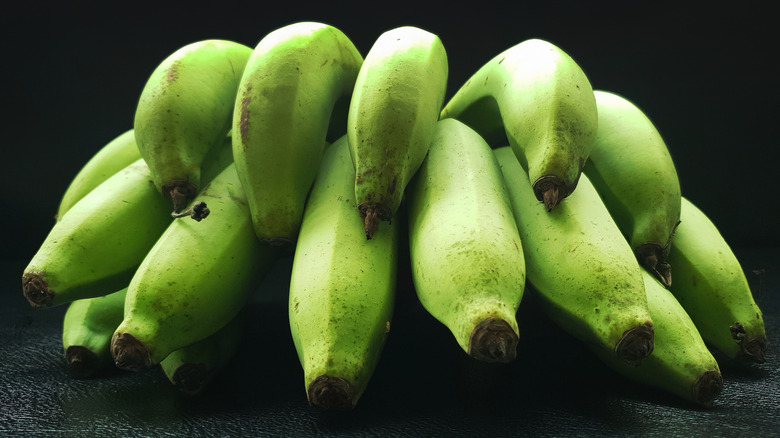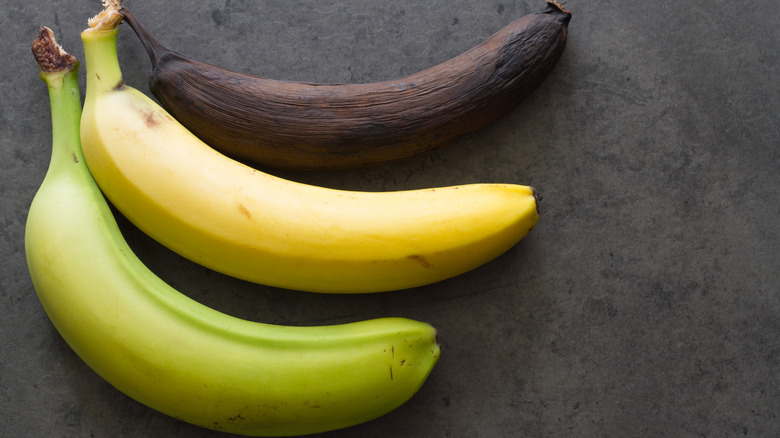You're Better Off Buying Green Bananas. Here's Why
We've all done it: bought perfectly ripe bananas with the intention of using them before they go bad, only to have them turn brown and mushy before they can be consumed. While there are some hacks to help avoid this, like the aluminum foil trick that keeps bananas from ripening too quickly, you need to put those plans into action before the inevitable happens. While you can get away with using them when they're very ripe, like when baking an easy three-ingredient banana bread, once they reach that overripe stage, there's not much you can do other than throw them into the trash or compost heap.
Rather than waste money on yellow bananas that will never get eaten, you're better off buying green bananas. Bananas will continue to ripen after they're picked. For this reason, growers harvest and ship them while they're still green, ensuring that they don't hit that desirable ripe point before reaching the market. However, since those attractive yellow ones are already at their peak when you see them at the store, you already know that their time is limited ... if you don't eat them right away, they'll soon go past the point of no return.
Rather than suffer this fate, opt for bananas that are still at least partially green. This buys you a few days to incorporate them into your routine. Using a banana hanger is the secret to storing bananas without bruising them, which also helps with slowing down the ripening process.
Green bananas are safe to eat
Green bananas can be allowed to ripen naturally in their own time. However, if you want to use them sooner, the easiest way to speed things up is to place them in a paper bag. The fruit releases a gas called ethylene, which controls ripening. Closing them up in a bag concentrates the ethylene and makes them turn yellow faster.
While yellow bananas are enjoyable for their soft texture and sweetness, green bananas are safe to eat and may offer additional nutritional benefits too. Unripe bananas are high in resistant starch and pectin, both of which are forms of dietary fiber that help regulate blood sugar and digestion. As the fruit ripens, starch and pectin break down into sugar, which is why yellow bananas are so sweet. While you might not be as familiar with eating immature bananas, there are plenty of tasty ways to utilize them in their unripe stage.
You can take advantage of their starchy, not-as-sweet state by using green bananas as you would plantains or potatoes. One difference between bananas and plantains is that the latter is usually cooked before eating, and you'll want to do the same with green bananas, which may taste bitter when raw. Try frying, grilling, or roasting them with a bit of oil, salt, and pepper for a tasty side dish or snack. In Jamaica, they're boiled and used in soups, cooked as porridge, or made into a delicious mashed-potato-style dish.


